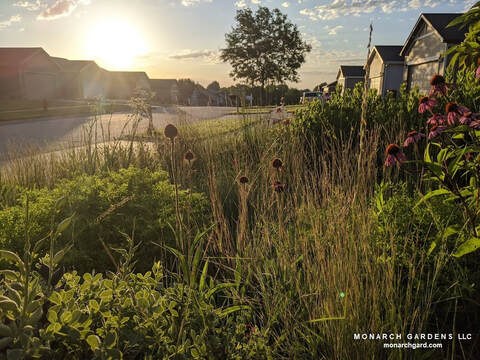These two groups can broadly be labeled as wildlife enthusiasts and landscape designers, respectively. They both "get it" but from different ends of the spectrum that are essentially the same. The former group tends to eschew tenets of design -- succession, community, form, texture -- while the latter tends to eschew wildlife reproduction in favor of color and ambience. (These are broad generalizations, so forgive me if you don't agree or fit in neatly on one end of the spectrum -- I'm just making partially unfair blanket observations to get to a point.)
My new book will attempt to better align these two perspectives, as both are critical for the success of urban gardens that both appeal to and involve people and wildlife together. It is critical that people find nature-inspired gardens beautiful, while it is just as critical that wildlife find them beautiful as well. Just because one has host plants does not mean the garden is beautiful to wildlife, and just because one has a diversity of flowers doesn't mean the garden is beautiful to wildlife.
Sure, plant Asclepias syriaca, but it tends to work better aesthetically in a larger landscape or as a few individual stems in the back or middle of a border. Shorter, more clumping-like species such as A, tuberosa may work, or even those that are short yet also seem to self sow around like A. verticillata. And among these milkweed ensure you have layers of diverse native plants that provide flowers (and host larvae of other insect species) from April to October, along with an intermix of sedge and grass -- and even a clump of shrubs and trees -- that mutually support one another and even more wildlife than just one butterfly species all year round.
I suppose my greatest concern is this: that we might garden for one species at the exclusion of others while justifying that exclusion with whatever validates our point of view. That can be unkempt wildness without a nod to structural diversity and necessary aesthetics (uber gardening for one butterfly species even), or a focus on flower color and diversity for human appreciation / acceptance that may primarily support adult insect species at the exclusion of a diversity of plants that produce insect young. Are these ideologically-opposed perspectives? Heck no. But the balance can easily get out of whack as passions grow. Creating gardens that are as beautiful for all species together, at once, is a hard task that requires focus, knowledge, and in many respects a type of gardening that balances the very fine line of too wild and not wild enough. That's the gardener's dilemma in a world of mass extinction and climate change, where one species has privileged itself at the expense of others. How much do we "garden," and what does "gardening" look like in a world we've reshaped in our own image?



 RSS Feed
RSS Feed

